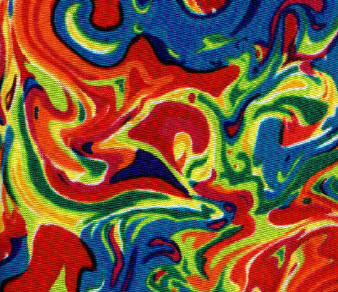|
|
||||
|
Principles of design - it is very important to consider the eternal principles of design while learning digital arts. 1. BalanceAll elements are placed in a way that gives an impression of steadiness. There are two types of balance:
Informal
Balance
is a balance of objects that may look
2. RhythmRhythm is meaningful repetition.
In graphic
design, rhythm occurs when a certain element It can add movement to a design. It looks like something is happening and leads the readerís eye in a desired direction. Good rhythm helps the reader maintain interest in the design.
3.
Proportion
|
|
|
|
|
Proportion is the size relationship of one part to another.
By itself, the size of an object has little meaning.
Only by comparing it to something else can we say itís too big or too small.
In graphic design the proportions of one element to another should be correct. Although some elements may be larger or smaller, the effect should be pleasing.
4. Contrast


 |
The purpose of contrast in design is to create interest in the product or work of art.
Interest is typically created by change in size, shape, colour, tone, typeface, and direction.
Illustrations, photos, and type can individually be varied in size and weight.
The use of different FONT styles (bold, italic, outline, shadow, and underline) and varying font point sizes adds contrast and serves to emphasize areas or words in the message.
Colour affects people in different ways.
 Red,
yellow,
and orange are warm colours often signifying
danger or excitement.
Red,
yellow,
and orange are warm colours often signifying
danger or excitement.

Blue,
violet,
and green are cool colours associated with
water.
Brown and green
are earthy colours.
![]() You
can perceive about 10 million colours!!!
You
can perceive about 10 million colours!!!
![]()
COLOUR
HUE/ SATURATION USING RGB IN NUMBER OR HEXADECIMAL CODE
click on this
interactive device and discover the principles of additive colour and hue
sometimes you need to match colours ............ use the hex colour
number
>>HEX system note that RGB number goes to 255 (that gives 2 to the power of 255 = about 16million colours on a computer but the eye can only perceive 10 million)
5.
Unity

Unity is the most important principle of design.
It is the quality
that holds the layout together in harmony. A design that effectively and
efficiently communicates the message to the audience has good unity.
Each element needs to be placed on the page in a pleasing relationship
with the other elements.
6. Variety
Variety is difference.
Variety in graphic
design may add interest and excitement.

The younger the audience the more variety you can use, while older audiences like a more traditional look.
Whatever design principle you use in your production, good planning is necessary to avoid last-minute problems.
It is the designerís responsibility to see that the publication is produced in an acceptable manner.
The basic guidelines for Good Design >>>>
1.
Consider the target group of viewers!!!!!
What do they want?
What
do you want to say?
2. Be Consistent.
3. Keep it Simple.
4. Avoid Static Balance. ( eye does not roam around )
5. Establish a Dominant Element.
6. Images and
Symbols Enhance the Message.
7. Utilize White Space. (think Google)
Good design is often the result of trial and error!


 different but have equal weight to
the eye. It allows for a more flexible placement of message elements in
the layout. The elements are not symmetrically centered, but must be
placed so that a state of equilibrium exists.
different but have equal weight to
the eye. It allows for a more flexible placement of message elements in
the layout. The elements are not symmetrically centered, but must be
placed so that a state of equilibrium exists. is repeated ,sometimes with changes to position, size, or angle of
palcement.
is repeated ,sometimes with changes to position, size, or angle of
palcement.

